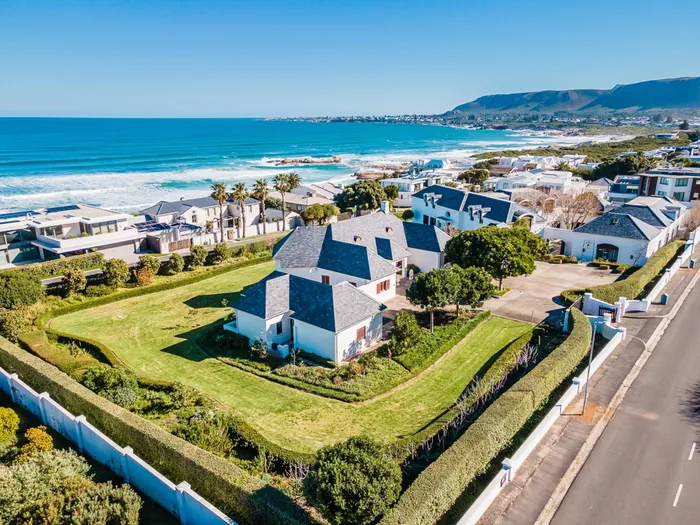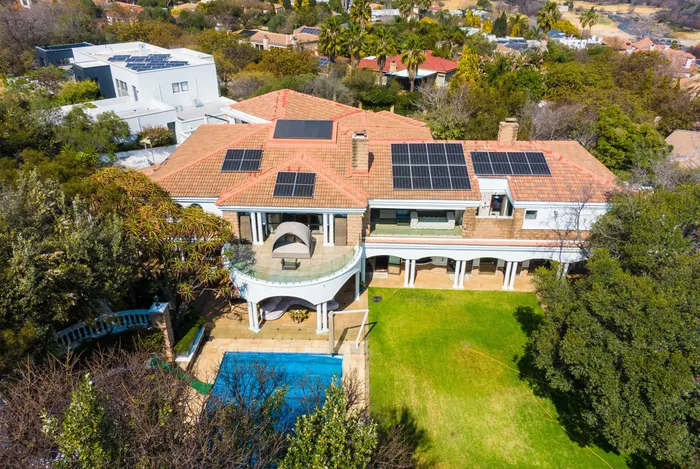Luxury property market surges as millionaires eye Hermanus and young buyers flood Sandton

As Black Coffee’s multi-million rand coastal home makes headlines, luxury property trends are heating up across South Africa—from R100 million estates in Hermanus to a surge of young buyers flocking to Sandton’s sought-after suburbs.
Image: Supplied.
South Africa’s property market has become a talking point once again as big celebrity buys and record-breaking listings highlight both ends of the country’s housing landscape.
DJ Black Coffee’s recent purchase of a luxury property in the Western Cape has added to the buzz surrounding high-end real estate, while new data shows younger buyers are rapidly reshaping the Johannesburg market.
At the top of the luxury ladder, a R100 million-plus coastal estate in Hermanus has become one of the most talked-about listings in the country.
Paul Kruger, licensee for Seeff Hermanus, said the property has been drawing notable attention from investors but has yet to find the right buyer.
“Calls and enquiries are coming in, and we expect the property to sell for over R100 million, as the estate offers an unmatched legacy investment. There is no other property currently on the market which offers this precise combination of a unique, prime oceanfront location, and sheer land size in Voëlklip,” Kruger said.
The property was originally owned by the Rupert family as their holiday retreat before being developed into a sprawling coastal estate spanning more than 7,000 square metres. It boasts panoramic views of Walker Bay and is described by Kruger as “a world-class, front-row seat to spectacular whale-watching.”

As Black Coffee’s multi-million rand coastal home makes headlines, luxury property trends are heating up across South Africa—from R100 million estates in Hermanus to a surge of young buyers flocking to Sandton’s sought-after suburbs.
Image: Supplied.
“A property of this size and location is virtually unheard of,” Kruger added.
“The magnificent estate is a piece of coastal heritage with a massive 2,082 square metre Cape vernacular manor house featuring seven bedrooms, nine bathrooms, and expansive reception rooms with bespoke, high-end finishes. There is also an indoor swimming pool, private wine cellar, heritage cottage, flat, and ten garages surrounded by meticulously maintained gardens.”
Kruger said the property’s legacy appeal and location make it one of the strongest coastal investments available.
“Its distinguished history, architectural mastery, vast footprint, and unparalleled location in one of South Africa’s fastest-growing wealth hubs makes it a beacon for discerning investors.”
Hermanus has long attracted the country’s elite.
According to New World Wealth, more than 1,100 millionaires own property in the Whale Coast area, with Hermanus as the main hub.
Tourism contributes over half of the region’s economy, and Kruger noted that property values have more than doubled over the last decade, with total sales reaching R2.9 billion in the past year.
While Hermanus continues to appeal to high-net-worth individuals seeking lifestyle investments, the country’s urban property landscape tells a different but equally dynamic story.
According to Seeff Sandton’s Managing Director, Charles Vining, younger buyers are reshaping the Johannesburg North property scene, particularly in Sandton and surrounding suburbs.
“Sandton and Johannesburg North are home to some of the most sought-after real estate in the country, along with some of the best schools which are drawing buyers to these areas,” said Vining.
Lightstone data showed that 78% of buyers over the last year were under the age of 50, with half of those under 35.
The suburbs of Morningside, Bryanston, Lonehill, and Parkhurst emerged as the biggest sellers for 2024, with Fourways and Parkhurst among the fastest-moving markets.
“Seeff agents are reporting a welcome return of energy to the market,” Vining said.
“FNB has also recently reported that house prices are rebounding with better growth compared to the last two years.”
Lightstone data also showed Sandton recorded 7,165 property transactions last year, with Bryanston adding a further 976 transfers.
The average transaction price in Sandton is around R2.5 million, while freestanding houses average R3.5 million.
The most active price range for family homes is between R3 million and R8 million, with 8.2 percent of all transactions exceeding R5 million.
Several high-value sales were recorded across Sandton and Johannesburg North this year, including Sandhurst (R75 million), Bryanston (R40.25 million), Inanda (R27 million), Morningside’s Cloud’s End Estate (R25.5 million), Illovo (R22 million), Dainfern (R21 million), Westcliff (R20 million), and the Michelangelo Towers Penthouse in Sandown (R20 million).
The top-performing suburbs remain some of Johannesburg’s most prestigious.
Bryanston continues to attract high-income families seeking access to leading schools such as St Stithians and The British International College, with homes priced between R3 million and R8 million and top-end properties exceeding R20 million.
Fourways remains popular with families due to its secure estates and proximity to Crawford Lonehill and Dainfern College, with prices ranging from R2.5 million to R65 million in premium developments.
Older, established suburbs such as Parkhurst, Parkview, and Parktown North remain desirable for their village charm and access to elite schools like St John’s and King Edward, while Morningside and Lonehill attract those looking for exclusivity, space, and top-tier amenities.
As Vining explained, “Sandton and Joburg North offer the most sought-after addresses and access to top-tier schools and amenities, underscoring the demand for property.”
From the quiet whale-watching coastline of Hermanus to the tree-lined streets of Johannesburg North, South Africa’s property market is proving resilient, diverse, and increasingly aspirational.
Whether it is a R100 million oceanfront estate or a family home in Bryanston, property remains one of the country’s most powerful symbols of status and investment potential.
BUSINESS REPORT